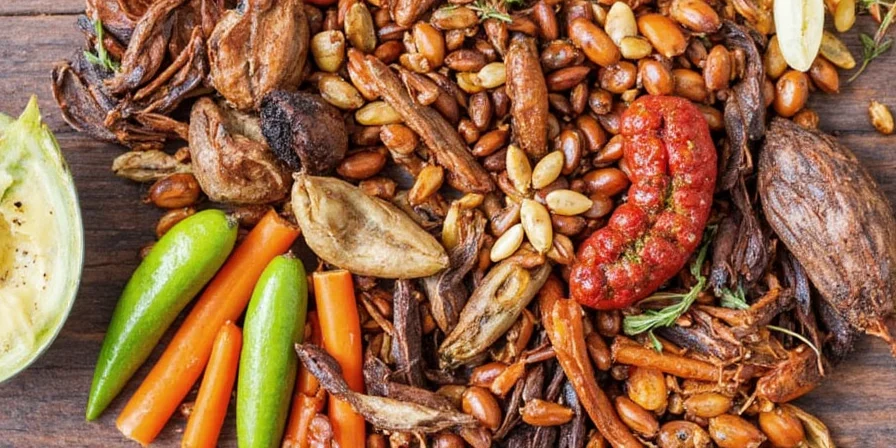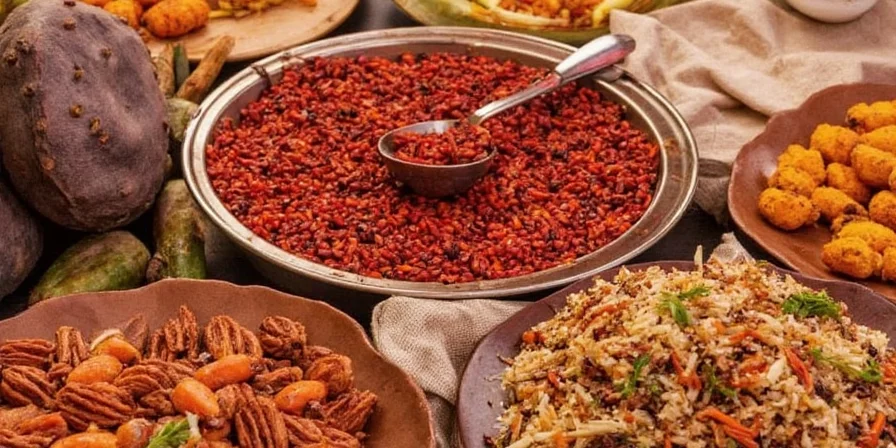Spice Safari: Uncovering the Flavors of South African Traditional Foods
Welcome to a culinary adventure across the vibrant landscapes of South Africa — where spices dance with tradition and flavor! Whether you're a seasoned spice hunter or just curious about global cuisine, this blog is your passport to understanding the rich tapestry of South African traditional foods. From fiery curries to smoky stews, let’s explore the spices that make these dishes unforgettable.
Table of Contents
- Introduction
- Top 5 Traditional South African Dishes & Their Spice Profiles
- The Spice Cabinet of South Africa: Must-Have Ingredients
- Spice Hacks: How to Recreate Authentic South African Flavors at Home
- Myth Busting: Debunking Common Misconceptions About South African Spices
- Flavor Pairings: What Goes Best With These Dishes?
- Conclusion
Introduction: The Soul of South African Cuisine
South African cuisine is a melting pot of flavors influenced by indigenous tribes, Dutch settlers, Malay traders, Indian immigrants, and British colonizers. Each region tells its own story through food, and spices are the storytellers. The result? A diverse, aromatic, and deeply flavorful culinary landscape.
Top 5 Traditional South African Dishes & Their Spice Profiles
Let’s dive into the five iconic South African dishes every spice lover should know. Here's a quick breakdown:
| Dish | Key Ingredients | Signature Spice(s) |
|---|---|---|
| Bobotie | Ground meat, curry powder, eggs, milk | Curry Powder |
| Pap en Vleis | Maize meal, meat (beef/lamb), tomato/onion sauce | Allspice, Bay Leaf |
| Chakalaka | Vegetables, beans, chili, vinegar | Vinegar, Chili Powder |
| Bredie | Lamb, onions, tomatoes, tamarind | Tamarind, Allspice |
| Morogo | Wild greens, onions, garlic | Black Pepper, Salt |

The Spice Cabinet of South Africa: Must-Have Ingredients
If you want to cook like a local, stock your pantry with these essential spices:
- Curry Powder – A must-have for any South African kitchen, especially in Cape Malay dishes.
- Allspice – Adds warmth to meat dishes like Pap en Vleis.
- Vinegar – Not just an acid, but a foundational flavor in many South African recipes.
- Coriander Seeds – Often toasted and ground fresh for richer flavor.
- Tamarind – Lends a tangy depth to slow-cooked stews like Bredie.
- Chili Powder – For those who like it hot, especially in vegetable relishes like Chakalaka.
Spice Hacks: How to Recreate Authentic South African Flavors at Home
You don’t need a trip to Cape Town to experience authentic South African flavors. Just follow these easy spice hacks:
- Toasting makes all the difference: Lightly toast coriander seeds, cumin, and fennel before grinding them for deeper flavor in curries and stews.
- Make your own curry powder: Combine turmeric, coriander, cumin, ginger, fenugreek, and a pinch of chili for a homemade mix that outshines store-bought versions.
- Layer spices slowly: In stews like Bredie, add spices early and let them bloom in oil before adding liquids. This allows the aroma to infuse deeply into the dish.
- Use vinegar to balance heat: If a dish becomes too spicy, a splash of vinegar can help cut through the heat while enhancing other flavors.
- Add tamarind paste toward the end: Tamarind is sensitive to long cooking times. Add it during the last 10–15 minutes to preserve its tart complexity.

Myth Busting: Debunking Common Misconceptions About South African Spices
There are plenty of myths floating around when it comes to South African flavors. Let’s set the record straight:
- Myth 1: All South African food is super spicy.
Reality: While some dishes have heat, many rely on warming spices like allspice and cinnamon rather than chili. - Myth 2: You can only use pre-mixed curry powders.
Reality: Freshly ground spices offer more depth and authenticity. Mix your own for better control over flavor intensity. - Myth 3: Only red meat pairs well with South African spices.
Reality: Vegetarian dishes like Morogo and Chakalaka shine with the right spice blend. - Myth 4: South African spices aren’t unique or complex.
Reality: The combination of Indian, Dutch, and indigenous influences creates one-of-a-kind flavor profiles not found anywhere else.
Flavor Pairings: What Goes Best With These Dishes?
Pairing the right side or beverage with your South African meal can elevate the experience. Here are some classic pairings:
- Bobotie + Rooibos Tea: The earthy sweetness of rooibos complements the warm curry notes.
- Pap en Vleis + Amarula Cream: This South African cream liqueur contrasts beautifully with the savory richness of the meat.
- Chakalaka + Crusty Bread: Ideal for soaking up the spicy-sour goodness.
- Bredie + Malva Pudding: A sweet-sour duo — malva pudding balances the tartness of tamarind in Bredie.
- Morogo + Sourdough: Enhance the rustic simplicity of wild greens with a slice of hearty bread.
Conclusion: Bringing the Taste of South Africa to Your Table
South African cuisine is more than just food — it’s a celebration of history, culture, and community brought together through spices. Whether you're making Bobotie on a rainy Sunday or spicing up your veggies with Chakalaka, there’s a world of flavor waiting for you.
So next time you reach for that jar of curry powder or open a bag of maize meal, remember: you’re not just cooking a meal — you’re stirring up centuries of tradition.










 浙公网安备
33010002000092号
浙公网安备
33010002000092号 浙B2-20120091-4
浙B2-20120091-4